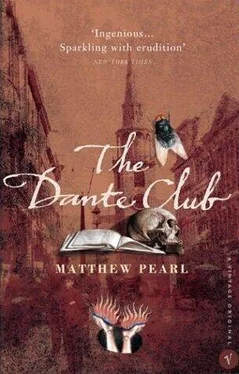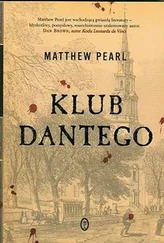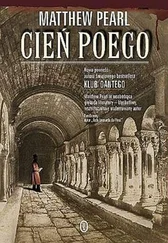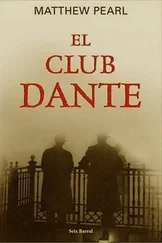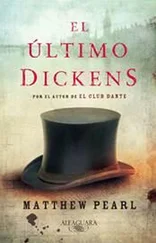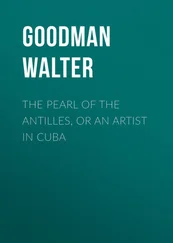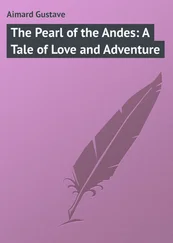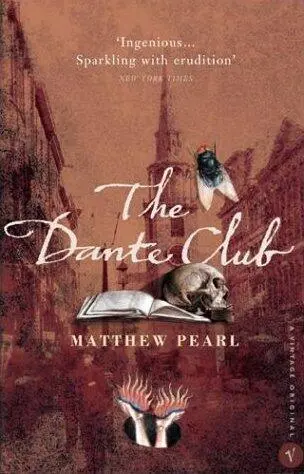
Matthew Pearl
The Dante Club
The Dante Club is a work of fiction. Many of the characters are inspired by historical figures; others are entirely imaginary creations of the author. Apart from the historical figures any resemblance between these fictional characters and actual persons, living or dead, is purely coincidental.
To Lino, my professor, and Ian, my teacher
A Preface by C. Lewis Watkins, Baker-Valerio Professor of the Civilization and Literature of Italy and Rhetorical Oration
Pittsfield Daily Reporter , “Community Notebook,” September 15, 1989
Lexington Boy’s Insect Scare Sparks “Renewal”
Search teams safely recovered Kenneth Stanton, 10, of Lexington, in a remote corner of the Catamount Mountains on Tuesday afternoon. The fifth grader was treated at Berkshire Medical Center for swelling and discomfort resulting from the deposit of larvae by initially unidentified insects nested in his wounds.
Entomologist Dr. K. L. Landsman of the Harve-Bay Institute Museum in Boston reports that the blowfly samples retrieved from the site are historically unknown to Massachusetts. More noteworthy, says Landsman, the insects and their larvae appear to represent a species that has been thought completely extinct by entomologists for nearly fifty years. Cochliomyia hominivorax , known commonly as the New World primary screwworm, was classified in 1859 by a French doctor on a South American island. By the end of the 19th century the presence of this dangerous species grew to epidemic levels, causing the deaths of hundreds of thousands of livestock throughout the Western Hemisphere and reportedly some human beings. During the 1950s, a massive American-engineered program successfully eradicated the species by introducing gamma-radiated sterile male flies into the population, ending the ability of the female flies to reproduce.
Kenneth Stanton’s scare may have contributed to what is known as a laboratory-assisted “renewal” of the insects for the purpose of research. “Though eradication was a wise public health initiative,” says Landsman, “there is much that can be learned in a controlled setting with new observational technologies.” Asked for his reaction to the taxonomic good fortune, Stanton replied, “My Science teacher thinks I’m great!”
You may wonder, referring back to the title page of this volume, how the above article could possibly relate to Dante, but you will see shortly that the connection is alarming. As a recognized authority on the subject of the American reception of Dante’s The Divine Comedy , I was contracted last summer by Random House to write, in return for their usual paltry fee, some prefatory remarks for this book.
The text of Mr. Pearl’s work derives from the true origins of Dante’s presence in our culture. In 1867, the poet H. W. Longfellow completed the first American translation of The Divine Comedy , Dante’s revolutionary poem of the hereafter. Presently, there exist more translations of Dante’s poetry into English than into any other language, and the United States produces more Dante translations than any other country. The Dante Society of America, of Cambridge, Massachusetts, boasts itself the oldest continuous organization in the world dedicated to the study and promotion of Dante. As T. S. Eliot remarked, Dante and Shakespeare divide the modern world between them; and Dante’s half of the world enlarges every year. Before Longfellow’s work, however, Dante remained all but an unknown entity here. We did not speak the language of Italian, nor did we teach it with any frequency; we did not travel abroad in any significant numbers, nor were there more than a sparse handful of Italians living in the entire United States.
Under the full force of my critical acumen, I found that beyond these essential facts, the extraordinary events narrated by The Dante Club advanced fable rather than history. However, searching the databases of Lexis-Nexis for confirmation of my appraisal, I discovered the startling newspaper notice, inserted above, from the Pittsfield Daily Reporter . Immediately contacting Dr. Landsman of the Harve-Bay Institute, I pieced together a fuller picture of the incident that occurred nearly fourteen years ago.
Kenneth Stanton had wandered away from the family fishing trip in the Berkshires and stumbled upon a strange trail of dead animals on an overgrown path: first, a raccoon with its navel engorged with blood, then a fox; farther in, a black bear. The boy afterward recounted to his parents a feeling like hypnosis as he faced the grotesque sights. He lost his balance and fell hard onto a jagged line of rocks. Left unconscious and with a fractured ankle, he was beset by the primary screwworm blowflies. Five days later, Kenneth Stanton, age ten, succumbed to sudden convulsions while recuperating in his bed. The autopsy found twelve maggots of the Cochliomyia hominivorax , one of the world’s deadliest insect species—extinct for fifty years, or so it was believed.
The reawakened species of fly, exhibiting a previously unreported capability to survive across climates, has been introduced since then to the Middle East, apparently through cargo shipments, and, as I write, decimates the livestock and economy of northern Iran. It has lately been theorized from scientific findings printed in last year’s Abstracts of Entomology that the divergent evolution exhibited by the flies originated in the northeastern United States circa 1865.
To the question of how it began there was no apparent answer—except, I now brokenheartedly believe, within the details of The Dante Club . For more than five weeks now, I have assigned the task of additional examination of Pearl’s manuscript to eight of the fourteen teaching fellows in my employment this semester. They have analyzed and cataloged the philological and historiographical precepts line by line, noting with flickering interest the minor mistakes that are the fault only of the author’s ego. With each passing day, we witness a bit more evidence of the remarkable gloom and glory encountered by Longfellow and his protectors the year Dante turned six hundred. I have waived any recompensation, for this was no longer a preface I set out to write but a warning. Kenneth Stanton’s death throws wide open the closed portal of Dante’s arrival to our world, of the secrets still lying dormant in our own age. Of these I only wish to caution you, reader. Please, if you continue, remember first that words can bleed.
Professor C. Lewis Watkins Cambridge, Massachusetts
John Kurtz, the chief of the Boston police, breathed in some of his heft for a better fit between the two chambermaids. On one side, the Irish woman who had discovered the body was blubbering and wailing prayers unfamiliar (because they were Catholic) and unintelligible (because she was blubbering) that prickled the hair in Kurtz’s ear; on the other side was her soundless and despairing niece. The parlor had a wide arrangement of chairs and couches, but the women had squeezed in next to the guest as they waited. He had to concentrate on not spilling any of his tea, the black haircloth divan was rattling so hard with their shock.
Kurtz had faced other murders as chief of police. Not enough to make it routine, though—usually one a year, or two; often, Boston would pass through a twelve-month period without a homicide worth noticing. Those few who were murdered were of the low sort, so it had not been a necessary part of Kurtz’s position to console. He was a man too impatient with emotion to have excelled at it anyway. Deputy Police Chief Edward Savage, who sometimes wrote poetry, might have done better.
Читать дальше
